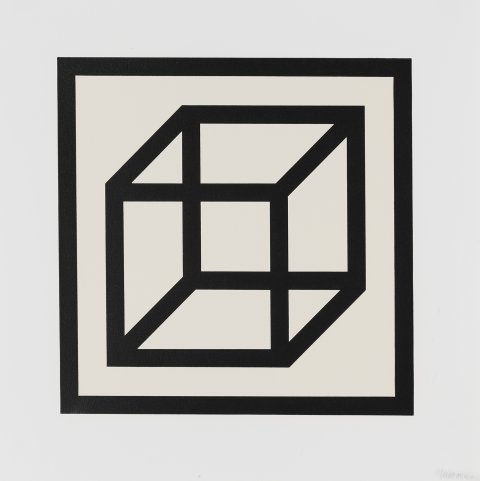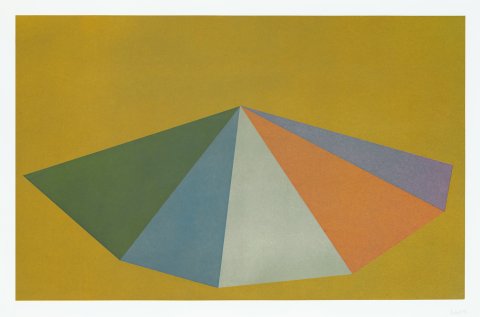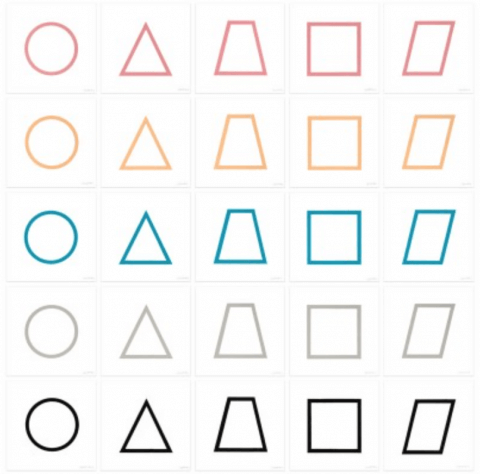

Open Cube in Black on White, 2004, linocut
Sol LeWitt was a pivotal figure to Minimalist and Conceptual art practice, he studied Fine Art at Syracuse University before working as a graphic designer in New York and in 1960 he worked at the book counter at MoMA. He continued to challenge definitions of what art could be, privileging the idea over expressionist art forms, which dominated at the time. As he wrote in 1971 on Conceptual Art:
“If the artist carried through his idea and makes it into visible form, then all the steps in the process are of importance. The idea itself, even if not made visual, is as much a work of art as any finished product.”

Pyramids (Plate #3), 1987, aquatint printed in colours
LeWitt produced relief works, instructions for constructions and wall drawings as well as lithographs, etchings and screen-prints. Printmaking was central to his practice and in his famous text on Conceptual art in 1967 he stated:
“When an artist uses a conceptual form of art, it means that all of the planning and decisions are made beforehand and the execution is a perfunctory affair. The idea becomes a machine that makes the art.”

Five Geometric Figures in Five Colours, 1986, 25 screenprints
His prints often incorporated simplified geometric shapes and vibrant colours on a large scale, which surround the viewer. In ‘Five Geometric Figures in Five Colours’ (1986) LeWitt takes simple geometric shapes such as squares or triangles and repeats them in rows. ‘Two Asymmetrical Pyramids” (1986) is composed of much brighter hues perhaps influenced from the coloured washes of frescos that he saw in Italy. The work is composed of a fan like collection of triangles in a cluster, which strives to create some illusion of three dimensionality and depth yet this is counteracted by the juxtapositions of bold hues. In both works the shapes are differentiated through colour to create eye-catching compositions. This illustrates the idea of a multiplicity of elements governed by a simple idea, what LeWitt saw as central to his art making process. When viewed set along side each other these works illustrate some form of progression.
